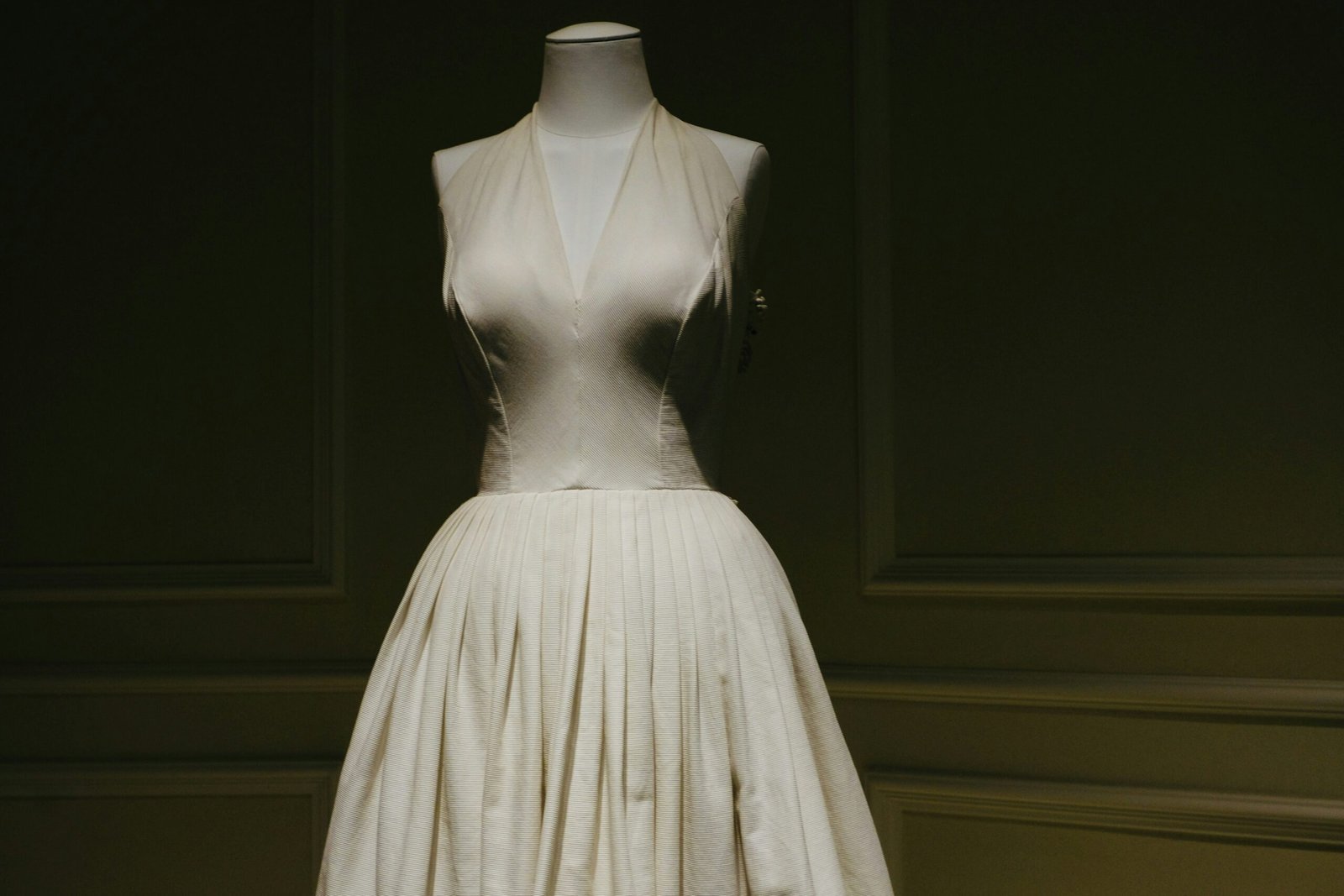Traditional garments hold a special place in the world of fashion, as they carry the rich heritage and cultural significance of a particular region or community. These garments have stood the test of time, evolving and adapting to modern sensibilities while still preserving their traditional essence. They serve as a bridge between the past and the present, allowing us to connect with our roots and appreciate the craftsmanship and artistry of our ancestors.
In today’s globalized world, traditional garments have become more than just cultural artifacts. They have become a source of inspiration for designers who seek to infuse their collections with a sense of authenticity and diversity. Fashion shows and runways around the world often feature models donning traditional garments, showcasing the beauty and uniqueness of different cultures. This not only promotes cultural diversity but also challenges the notion of a singular standard of beauty.
Moreover, traditional garments have also found their way into mainstream fashion, with elements such as intricate embroidery, vibrant patterns, and unique silhouettes being incorporated into contemporary designs. Fashion-forward individuals are embracing these traditional garments, not only as a way to express their individuality but also as a means to support and celebrate diverse cultures.
The popularity of traditional garments in the fashion industry has also led to a resurgence of interest in traditional crafts and techniques. Artisans and craftsmen who have been practicing these age-old traditions are now receiving recognition and appreciation for their skills. This has not only provided them with economic opportunities but has also helped in preserving and safeguarding these traditional crafts for future generations.
In conclusion, traditional garments continue to shape the fashion landscape in modern times. They are a testament to the rich cultural heritage of different communities and serve as a source of inspiration for designers and fashion enthusiasts alike. By embracing and celebrating traditional garments, we not only honor our roots but also promote cultural diversity and inclusivity in the world of fashion. Traditional garments hold a significant place in the cultural fabric of societies around the world. They are not just pieces of clothing, but rather, they represent the history, values, and customs of a particular community. These garments have been passed down through generations, carrying with them the stories and traditions of the past.
One of the most remarkable aspects of traditional garments is their symbolism. Each garment is carefully crafted with colors, patterns, and motifs that hold deep meaning. For example, in many indigenous cultures, the colors used in traditional garments represent different aspects of nature or spiritual beliefs. The patterns and motifs often depict stories of creation, important events, or even daily life activities. By wearing these garments, individuals are not only expressing their identity but also connecting to their cultural roots.
In today’s fast-paced and globalized world, traditional garments have also found their way into the realm of fashion. Designers are increasingly drawing inspiration from traditional garments to create contemporary and innovative designs. By incorporating elements of traditional garments into their collections, designers are not only paying homage to the cultural heritage but also creating a bridge between the past and the present.
This fusion of traditional and modern elements in fashion has given rise to a new wave of creativity and appreciation for traditional garments. Designers experiment with different fabrics, textures, and silhouettes to create unique pieces that showcase the beauty and versatility of traditional garments. These designs are not only worn on special occasions but also in everyday life, allowing individuals to express their cultural identity and pride.
Moreover, the popularity of traditional garments has also led to a revival of traditional craftsmanship. Skilled artisans, who have been practicing their craft for generations, are now finding new opportunities to showcase their skills and preserve their cultural heritage. This revival has not only provided economic opportunities for these artisans but also ensured the continuity of traditional craftsmanship for future generations.
In conclusion, traditional garments hold immense significance in preserving the cultural heritage of communities worldwide. They are not just clothing items but rather symbols of identity, history, and customs. The fusion of traditional and modern elements in fashion has given these garments a new lease of life, allowing them to be appreciated and celebrated by a wider audience. By wearing traditional garments, individuals not only showcase their cultural pride but also contribute to the preservation of cultural heritage for generations to come. Another traditional garment that has left an indelible mark on modern fashion is the Scottish kilt. Originally worn by men in Scotland, the kilt has evolved from a practical garment for the Highlanders to a symbol of Scottish identity and a fashion statement. Designers have taken inspiration from the kilt’s distinctive pleats and tartan patterns, incorporating them into skirts, dresses, and even tailored suits. The kilt’s influence can be seen in various fashion shows and collections, where it adds a touch of heritage and tradition to contemporary designs.
In addition to specific garments, traditional textiles and weaving techniques have also influenced modern fashion. For example, the intricate embroidery of traditional Chinese garments, such as the cheongsam, has inspired designers to incorporate similar embroidery techniques into their designs. The result is a fusion of traditional craftsmanship and modern aesthetics, creating visually stunning pieces that pay homage to the rich cultural heritage of China.
Furthermore, the vibrant colors and intricate beadwork of traditional African garments have captivated the fashion world. Designers have embraced African prints and fabrics, incorporating them into their collections to create bold and unique designs. This not only celebrates the beauty of African culture but also promotes inclusivity and diversity in the fashion industry.
The influence of traditional garments on modern fashion goes beyond aesthetics. It also reflects a growing interest in sustainability and ethical fashion. By embracing traditional garments and techniques, designers are promoting the use of handmade, locally sourced, and environmentally friendly materials. This shift towards sustainable fashion not only preserves traditional craftsmanship but also supports local communities and reduces the industry’s environmental impact.
In conclusion, the influence of traditional garments on modern fashion is a testament to the power of cultural exchange and innovation. From the kimono to the kilt, traditional garments have inspired designers to create unique and diverse collections that celebrate heritage, promote inclusivity, and embrace sustainability. As fashion continues to evolve, the influence of traditional garments will undoubtedly continue to shape and redefine the industry. In today’s globalized world, where cultures are constantly blending and evolving, it is essential to promote cultural diversity and appreciation. The incorporation of traditional garments in modern fashion is a powerful way to achieve this. When designers and consumers embrace traditional garments, they not only showcase the beauty and craftsmanship of different cultures but also send a message of acceptance and inclusivity.
Traditional garments carry deep cultural significance and often represent a community’s history, values, and beliefs. By incorporating these garments into modern fashion, designers create a platform for cultural exchange and understanding. When a traditional garment is showcased on a runway or worn by someone in a non-traditional setting, it challenges stereotypes and breaks down barriers. It allows people to appreciate the richness and diversity of cultures different from their own.
Moreover, the fashion industry has the potential to play a significant role in preserving traditional crafts and supporting local artisans. Many traditional garment-making techniques have been passed down through generations, and they hold immense value for the communities that practice them. However, with the rise of fast fashion and mass production, these traditional crafts are at risk of being forgotten or replaced by cheaper alternatives.
By collaborating with artisans and using traditional techniques and materials, designers can help sustain these cultural treasures. They provide a market for traditional artisans, ensuring that their skills are valued and their livelihoods are protected. This collaboration not only preserves traditional crafts but also empowers local communities by providing them with economic opportunities.
Furthermore, when traditional garments are incorporated into modern fashion, they gain visibility and recognition on a global scale. This exposure not only generates interest and demand for these garments but also encourages younger generations to learn and carry on these traditional practices. It creates a sense of pride within the community and ensures that these cultural traditions continue to thrive.
In conclusion, the incorporation of traditional garments in modern fashion is a powerful tool for promoting cultural diversity and appreciation. It allows us to celebrate the uniqueness of each culture and fosters unity and understanding. By collaborating with artisans and preserving traditional crafts, the fashion industry can play a crucial role in sustaining these cultural treasures. It is through these efforts that we can ensure the preservation and appreciation of cultural diversity for generations to come.
Challenges and Controversies
While the incorporation of traditional garments in modern fashion has its merits, it is not without its challenges and controversies. Cultural appropriation is a sensitive topic that arises when elements of a particular culture are used without proper understanding or respect.
It is important for designers to approach the reinterpretation of traditional garments with sensitivity and cultural awareness. Collaborating with local artisans and communities can help ensure that the cultural significance and integrity of the garments are preserved.
Furthermore, it is essential to give credit where credit is due. Acknowledging the origins and cultural significance of the garments is crucial to avoid misrepresentation or appropriation. By doing so, designers can create a dialogue that promotes cultural exchange and understanding.
One of the challenges that designers face when incorporating traditional garments into modern fashion is striking a balance between innovation and preservation. While it is important to breathe new life into traditional garments by reinterpreting them in contemporary designs, it is equally important to respect their cultural heritage and not dilute their significance.
Designers must navigate the fine line between incorporating elements of traditional garments and appropriating them. This requires a deep understanding of the cultural context, symbolism, and history behind the garments. Without this understanding, designers run the risk of reducing these garments to mere fashion trends, stripping them of their cultural and historical value.
Another challenge is ensuring that the collaboration with local artisans and communities is done in an ethical and respectful manner. Designers must establish a mutually beneficial relationship, where the artisans are not exploited for their skills and knowledge but are instead valued partners in the creative process. This involves fair compensation, respect for their intellectual property rights, and the promotion of their work and heritage.
Controversies surrounding cultural appropriation often arise when designers appropriate traditional garments without acknowledging their origins or giving credit to the communities from which they originate. This can lead to misrepresentation and commodification of cultural symbols, reinforcing power imbalances and perpetuating stereotypes.
To address these controversies, designers should actively engage in dialogue with the communities whose traditional garments they seek to incorporate. This involves seeking their permission, understanding their concerns, and working together to ensure that the reinterpretation of these garments is done in a culturally sensitive and respectful manner.
Ultimately, the incorporation of traditional garments in modern fashion can be a powerful way to celebrate and promote cultural diversity. However, it is crucial that designers approach this process with humility, respect, and a willingness to learn from the communities whose heritage they are drawing inspiration from. By doing so, they can create fashion that not only looks beautiful but also tells meaningful stories and fosters cross-cultural understanding.





